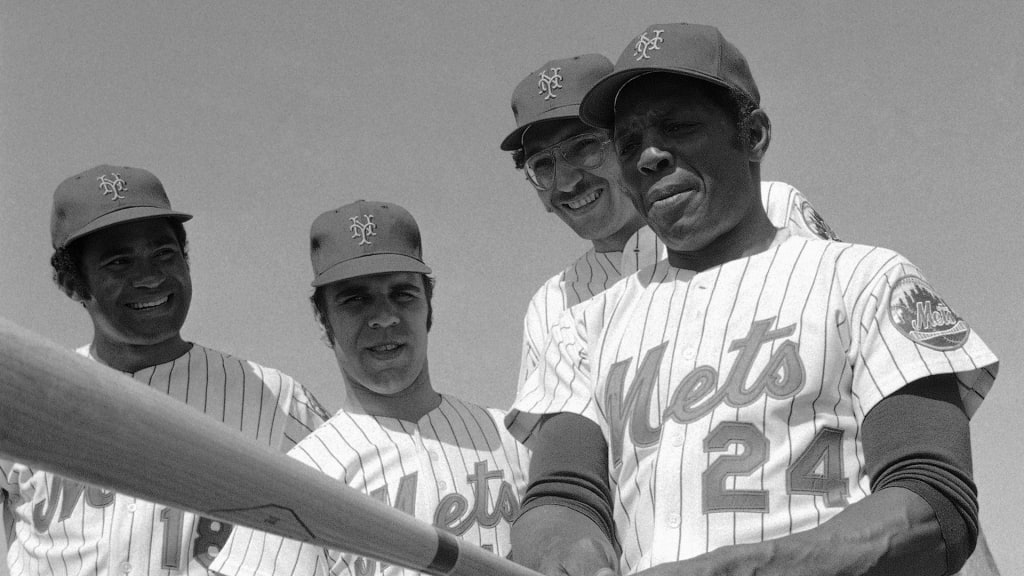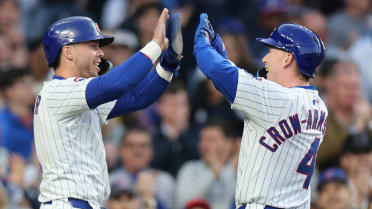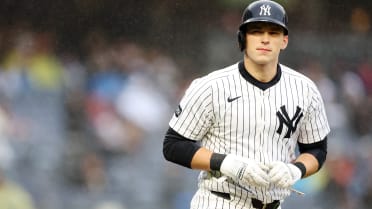
In honor of the 50th anniversary of the National League pennant-winning 1973 Mets, we're looking back at several of the notable players on that roster.
NEW YORK -- To Mets fans, former Major League outfielder George Theodore was affectionately known as “The Stork.” At 6-foot-4, he was gangly and looked awkward when he ran on the baseball field. However, he was good enough to be on the bench for the 1973 Mets, a team that went all the way to the World Series before losing to the Athletics in seven games.
When he made the team out of Spring Training, Theodore was like a kid in a candy store. Everything was new and exciting. He was a rookie trying to fit in. During his four years in the Minor Leagues, Theodore was used to riding the buses. But starting with the ‘73 season, the travel was different. He was riding on the team charters and eating better food.
Furthermore, Theodore expected to win championships. It helped that the Mets had a great pitching staff led by Tom Seaver and Jerry Koosman. Theodore’s goals for the team were sky high after he won the Governors’ Cup with Triple-A Tidewater the previous season and the California League championship with Class A Visalia in 1971.
“I was getting used to all the winning. … I was maybe spoiled a little bit. So I expected it,” Theodore said in a recent phone interview with MLB.com.
Theodore got off to a decent start in ’73, going 6-for-22 (.273) with two RBIs in April while the Mets jumped out to first place with a 12-8 record. By May and June of ‘73, Theodore was playing often because of an injury to Cleon Jones, but the team was in last place. Then, Theodore suffered a serious injury of his own on July 7 against the Braves.
It was the top of the seventh inning with the score tied at 3. After Braves first baseman Frank Tepedino singled with one out off of right-hander Phil Hennigan to put Atlanta in front, Ralph Garr followed and hit a ball to left center field. It looked like Theodore had a bead on it, but his best friend on the team, center fielder Don Hahn, also thought he had the chance to make the catch. Neither caught the ball and they collided, which allowed Garr to hit a two-run inside-the-park home run.
Theodore ended up getting the worst of it -- a dislocated left hip. He was in the hospital for a month, on crutches for another 30 days and didn’t return to game action until Sept. 20.
“There were a lot of ups going, and my injury left a lot of downs,” Theodore said. “It was total ignorance back then. They put me in the hospital in tractions for a month. I didn’t have surgery. [The doctors] were able to put my hip back into place by manipulating it. They told me if I was going to have hip problems, it will be within the next three to five years. Being on crutches, I didn’t have any physical therapy or anything like that, which I’m sure would have happened today. [Back then], it was basically, it’s healing. Just keep the pressure off of it.
“By the first of September, I got rid of the crutches and started walking. Then I started working out and hitting [in the cage]. That was the extent of it. Nowadays, I would have had an MRI. They would have checked on physical therapy and other things, although I don’t know if I would have done anything differently. I did lose some range of motion that I didn’t realize. It affected everything. I was never the same.”
When he returned to action, the Mets were in a pennant race and went on to win the National League East title. Theodore was put on the postseason roster but wasn’t a factor, going 0-for-2 in the World Series against the Athletics. As he put it, “The Stork” was on the bench as a cheerleader.
“The Mets didn’t have to do that,” Theodore said. “They could have put someone else on the roster. They could have used another pitcher or something. In a way I was shocked [to be put on the roster] as well as being appreciative. I got along with the players very well. It was a thrill.”
After the season ended, Theodore thought he would be in the postseason often. But that wasn’t the case. After starting ‘74 with the big club, Theodore was sent down to Tidewater before calling it a career during the spring of 1976. He then went to college and became an elementary school counselor for the next 38 years.
Looking back on his baseball career, Theodore wishes he picked the brains of Yogi Berra and Willie Mays, the manager and part-time center fielder for the ‘73 Mets, respectively. According to Theodore, they had built up years of valuable baseball knowledge.
“I would have asked [Berra], ‘How did you approach certain pitchers?’ or ‘How did you go about hitting in certain counts?’” Theodore said. “The same way with Willie Mays. … I look back and this guy was a genius. He didn’t just go out there and play and was natural. He analyzed things. He knew the different hitters. He knew how to get a jump and anticipate things. I wish we could have just sat down with him. He could have talked to us. A thrill to be around both of them.”
Bill Ladson has been a reporter for MLB.com since 2002. He covered the Nationals/Expos from 2002-2016.




